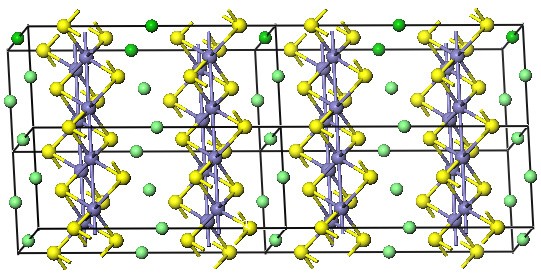Electrons are known to travel along a conducting material like commuters at the height of rush hour. These particles may bump against each other, unconcerned with other electrons as they hurtle forward with their energy.

When a material's electrons are trapped together, they can settle into the same energy state and start behaving as one. This zombie-like state is called an electronic "flat band," and physicists predict that electrons in this state can feel the quantum effects of other electrons, allowing them to act in coordinated, quantum ways.
Trapping Electrons in 2D Configuration
In previous studies, physicists successfully trapped electrons and confirmed their electronic flat-band state in two-dimensional materials. However, it was discovered that electrons trapped in this configuration can easily escape the third, making it difficult for scientists to maintain flat-band states in 2D.
Electrons trapped in a two-dimensional lattice of atoms resemble the art of "kagome," an old Japanese art of weaving baskets. This design consists of a regular pattern of hexagons and equilateral triangles surrounding one another.
When atoms are arranged in a pattern of interconnected, corner-sharing triangles, electrons are confined within the hexagonal space between triangles instead of hopping across the lattice. Since the electrons trapped this way can escape up and out of the lattice through the third dimension, experts wonder if a 3D configuration of similar lattices can be designed to box in the electrons.
Rocky Landings
The researchers synthesized a pyrochlore crystal in the laboratory to test this hypothesis. Led by MIT physics associate professor Joseph Checkelsky, the team made crystals just like how they are created in nature. They combined certain elements - in this case, calcium and nickel - melted them at high temperatures and cooled them down. This allowed the atoms to arrange into a crystalline, kagome-like configuration.
To find out if they arrived in the same flat energy band, the researchers measured the energy of individual atoms in the crystal. They also used photoemission to confirm flat-band states in different 2D materials.
Photoemission has been used in confirming flat-band states in 2D materials. Due to their physically flat, two-dimensional nature, such materials are relatively straightforward to measure using standard laser light. However, the task is more challenging for 3D materials. Their surface is like rocky mountains with a very corrugated landscape.
This hurdle was cleared using angle-resolved photoemission spectroscopy (ARPES), an ultra-focused beam of light that can measure the energies of thousands of electrons across a synthesized crystal sample in about 30 minutes. It was found that the crystal's electrons exhibited the same energy, a confirmation of the flat-band state of the 3D material.
The experiment's success presents a new paradigm for finding new and interesting quantum materials. According to the researchers, this study shows that with the special ingredient of atomic arrangement that can trap electrons, they can always find these flat bands. In the future, they plan to optimize their research to achieve the promise of flat-band materials and use their potential to sustain superconductivity at higher temperatures.
RELATED ARTICLE : Spin Wave Manipulation on a Magnet Made Possible Using Superconductors, Offers Alternative to Electronics in the Future
Check out more news and information on Superconductor in Science Times.










